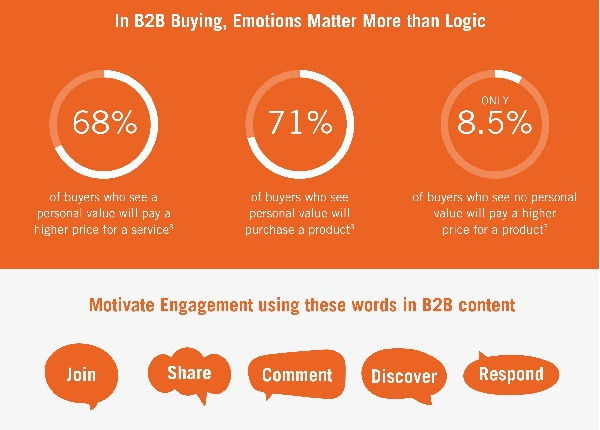
You’ve decided to open up new markets for your products, but you have a major challenge: how to build brand awareness among your new target customers. When you leverage content marketing to expand your business into new territory, you’ll be a step ahead of your competitors.
Quick Takeaways:
- Conduct a market analysis to identify target segments
- Expand your team to handle the larger content workload
- Create buyer personas and research content that meets their needs
- Create content targeted to your new market segments
- Revamp your brand perception to appeal to your new market
Conduct a Market Analysis
Whether it’s a new region or a new industry you want to target, one thing is constant: you need to identify which customers are likely to need your products and services. That means that you’ll need to dig into local or industry data to make sure that your marketing content reaches the right eyes and ears.
Look for market-relevant data, such as:
- Demographics: Who are the people who need your products in your new market? Look at their age, gender, culture, marital status, income, language, professions, and educational levels.
- Business characteristics: If you’re a B2B company or sell to both consumers and other businesses, you need to examine your prospects’ size, years in business, leadership team characteristics and philosophy, mission, yearly revenue, types of products and services produced, rate of growth, countries and regions in which they have a presence, and their own target customers.
- Content consumption behavior: Since you’ll need to publish your content where and when they’ll find it, it pays to look at which online – and offline – channels they prefer. Social media analytics can provide deep insights into online behavior. A deep dive into the data can even reveal which offline publications they read since many magazines, newspapers, and other print media have social media fan pages. Make sure to study their “likes” to identify special interests that can serve as content touchpoints.
- Pain points and other needs: Learning what keeps your prospects up at night, as well as their less-pressing needs, allows you to target those needs that your products and services can meet.
Consider Expanding Your Content Team
As Neil Patel points out, expanding your business “almost always requires a larger team.” In addition to a larger workload, brand expansion usually requires shifts in messaging and expertise.
Expanding into new industries
If you’re expanding into new verticals, you might need to add some writers who have expertise in those industries. Using a content marketing agency can provide the subject matter expertise you need without the expense and hassle of expanding your in-house team.
However, if you do go with adding to your in-house team, be sure that your top candidates’ portfolios demonstrate knowledge of your new target markets as well as competency in writing, design, or video production.
Expanding beyond borders

However, if you’re moving into territories whose native language is not your own, you’ll need a content marketing team led by native speakers. They’ll know the cultural nuances that can help your brand reach your new audiences in an authentic way.
If your company plans to do business with government entities or deals with sensitive legal matters or highly technical material, use a sworn translator to translate your existing content into your new markets’ languages. Sworn translators have completed intensive examinations in both the original language and their own and have earned the legal imprimatur to certify official government documents.
Create Buyer Personas
Now that you have your teams in place, look at your target customers’ data. Create well-researched buyer personas for each segment to help your teams focus on their needs.
Give your target customer a human face
Giving each segment a human face helps you tailor your content to communicate in a way that reaches their hearts as well as their minds. Studies show that 95 percent of all purchase decisions are emotion-driven.
Even if yours is a B2B company, emotion comes into play. In a 2013 Google study, 50 percent of the companies surveyed indicated that they had emotional ties to their vendors. Other studies show that B2B buyers will pay more for a product or service that provides them with personal value.

Learn what kind of content best meets your prospects’ needs
Solving problems for your prospects immediately identifies you as an expert in your field, building trust in your ability to meet their needs. More importantly, it positions you as someone with empathy for them, someone who is as focused on meeting their needs as you are on your bottom line. That kind of positioning allows them to see you as a trusted partner, one with which they can enter into a long-term business relationship.
If you have in-house teams, encourage them to read everything they can about new industries you plan to market to. From scholarly journals to blog posts, these resources can help your content teams learn the technical terms that industry insiders use to communicate.
Find social media platforms and forums that cater to your prospects’ industry, or for your B2C audience, their interests and challenges. Listen to them and enter into conversations when you see an opening. Be a helper, not a salesperson.
Furthermore, such research can help your teams uncover many of the challenges your prospects face. When they find a topic that your business can help them with, jot it down as a possibility for future content. Having a content platform on which you can store all your topic ideas and research notes makes it easier for your writing teams to find relevant resources to cite in their content.
Create Content that Targets Your New Market
When you enter new markets, you might need to create different types of content than you do for your current customers and prospects. For instance, if you were strictly a B2C company and have opened up a new B2B market, you should brush up on LinkedIn content best practices since your business executive prospects will probably look for LinkedIn posts. Case studies, white papers, and other content that answers common questions your prospects have are also well worth pursuing.
If you produce lawn maintenance products, and you’ve expanded from your northern location to the southern US, you’ll need to produce a slew of blog posts on lawn care for homeowners in the South. You might also need to look for new regional publishing channels to post links to your new posts.
Revamp Your Brand Perception to Appeal to Your New Markets
Your brand has established itself well, with a solid foothold on a dependable market. Then the brass upstairs decides to expand into a market so divergent that it requires a whole new perspective in branding.
Gillette: A brand perception shift that transformed a culture
How to respond? You do what they did at Gillette. After driving a sea of change in the men’s grooming industry in the early 1900s with its patented safety razor, the razor brand decided to go after a new market: women. Starting with a new name and design, the creatives behind the “Milady Décolleté” campaign singlehandedly created a new market by driving women’s desire for smooth underarms and, later on, legs.
For modern Americans, it’s hard to imagine a woman without clean-shaven underarms and legs. Gillette’s marketing team shifted not only its brand perception, but more significantly, transformed cultural perception.
MGM Hotels Las Vegas: From adult paradise to family-friendly
If you haven’t been to Vegas for a while, you might want to bring the family along during your next trip. Thanks to Beverly Jackson’s always-on content campaign, MGM Hotels created a massive shift in people’s perception of Las Vegas as solely adult entertainment to perceiving it as a family-friendly option.
Research and omnichannel content marketing, along with innovative content, allowed MGM to drive change in its brand perception. So much so that it has positioned its new Circus Circus venue to go toe-to-toe with Disney as a family vacation must-see.
As both Gillette and MGM Hotels’ success points out, promoting your brand in a new market is all about differentiating your new path not only from its competitors but, in a real sense, from its “other” self. Market-specific content can provide your business with a roadmap to expansion success.
If you are ready to get more traffic to your site with quality content published consistently, check out our Content Builder Service. Set up a quick consultation, and I’ll send you a free PDF version of my books. Get started today – and generate more traffic and leads for your business.
The post 5 Ways to Leverage Content Marketing to Expand Your Business into New Markets appeared first on Marketing Insider Group.
0 Commentaires